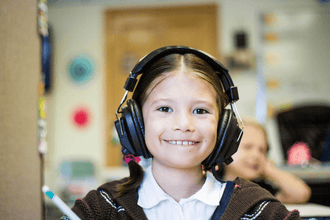
10 Signs to Help You Distinguish Between ADHD and Autism
Introduction:
As a parent, it can be incredibly challenging to understand the differences between ADHD vs autism, especially since these conditions share some overlapping symptoms. As an experienced expert specializing in children's autism, I aim to provide you with the information and strategies you need to distinguish between ADHD vs autism. Let's dive into the key signs that can help you differentiate between these two conditions.
Understanding ADHD and Autism
1. What is ADHD?
ADHD, or Attention-Deficit/Hyperactivity Disorder, is a condition characterized by persistent patterns of inattention, hyperactivity, and impulsivity that interfere with daily functioning.
2. What is Autism?
Autism is a developmental disorder that affects communication, behavior, and social interactions. Autism is a spectrum, meaning it manifests in a wide range of symptoms and severity levels. Children with autism often exhibit repetitive behaviors, have difficulty with social interactions, and may have specific interests or routines.

Common Overlapping Symptoms
1. Shared Traits
Both ADHD vs autism can present with similar symptoms, such as:
- Inattention and distractibility
- Hyperactivity and impulsivity
- Social challenges and communication difficulties
This overlap can make it challenging to differentiate between the two, but understanding the nuances of each condition can help.
2. Why These Overlaps Occur
Both conditions can impact executive functioning, emotional regulation, and social skills, making it essential to conduct a comprehensive evaluation for an accurate diagnosis.
Distinguishing Signs of ADHD vs Autism
1. Social Interactions
ADHD:
Children with ADHD often have difficulty waiting their turn, interrupt others frequently, and exhibit impulsive social behavior. For example, my nephew Jake, who has ADHD, often struggles to wait his turn during family board games, blurting out answers or getting up from his seat frequently.
Autism:
Children with autism, on the other hand, may have difficulty understanding social cues, prefer solitary activities, and struggle to form peer relationships. My son, Liam, who is on the autism spectrum, prefers playing alone and finds group activities overwhelming. He has a hard time reading facial expressions and often misses social cues.
2. Communication Style
ADHD:
Children with ADHD tend to be very talkative and may dominate conversations, but they often struggle with listening to others. Jake, for example, loves to share stories but often interrupts others and has trouble staying on topic.
Autism:
Children with autism may have delayed speech development, use a monotone voice, or exhibit unusual speech patterns. Liam, for instance, took longer to start speaking and often uses a very formal tone when he talks, making his speech sound different from his peers.
3. Focus and Attention
ADHD:
Kids with ADHD are easily distracted and have difficulty sustaining attention on tasks. They might jump from one activity to another without finishing any of them. Jake often starts multiple homework assignments but struggles to complete them without frequent reminders.
Autism:
Children with autism can have an intense focus on specific interests and find it difficult to shift their attention away from these interests. Liam can spend hours discussing his favorite topic, dinosaurs, and finds it challenging to switch to other activities.
4. Behavioral Patterns
ADHD:
Hyperactivity and fidgety behavior are signs of ADHD. Children with ADHD might appear to be constantly on the go and have difficulty sitting still. Jake is always moving, whether he's tapping his foot, drumming his fingers, or getting up and down from his chair.
Autism:
Repetitive behaviors and a strong need for routines are common in autism. Children with autism may engage in behaviors like hand-flapping, lining up toys, or following strict routines. Liam, for example, has a bedtime routine that he follows meticulously, and any deviation can cause significant distress.
5. Sensory Sensitivities
ADHD:
Sensory issues in ADHD are generally less pronounced. Children with ADHD might seek out sensory stimulation, such as enjoying loud noises or fast movements. Jake loves the thrill of roller coasters and loud music, which helps him channel his energy.
Autism:
Children with autism often have hypersensitivity or hyposensitivity to sensory input. They may be extremely sensitive to certain textures, sounds, or lights, leading to sensory overload and meltdowns. Liam is very sensitive to loud noises and bright lights, so we keep earplugs and sunglasses handy for outings.
6. Emotional Regulation
ADHD:
Kids with ADHD can be quick to anger or frustration and often have difficulty managing their emotions in the moment. Jake's temper can flare up quickly if things don't go his way, but he also calms down relatively fast.
Autism:
Children with autism may struggle to understand and express their emotions. Meltdowns are often triggered by changes in routine or sensory overload. Liam's meltdowns can be intense and last longer, often requiring a quiet space and time to recover.
7. Academic Performance
ADHD:
Inconsistent academic performance due to inattention and impulsivity is common in ADHD. Children may struggle with organization and time management, leading to missed assignments or incomplete work. Jake's teachers often note his potential but also his frequent distractions.
Autism:
Children with autism might excel in subjects they are passionate about but struggle with the social aspects of school, such as group work or unstructured activities. Liam excels in science but finds recess and group projects challenging.

8. Play and Leisure Activities
ADHD:
Children with ADHD prefer activities that provide immediate feedback or excitement and may have difficulty engaging in quiet, solitary play. Jake loves video games, which offer constant stimulation and action.
Autism:
Children with autism often engage in repetitive play and prefer structured, predictable activities. Liam enjoys building intricate Lego structures and following step-by-step instructions, which provide a sense of order and predictability.
9. Response to Routines and Changes
ADHD:
Kids with ADHD may struggle with routines and act impulsively, adapting more easily to changes in their environment. Jake can be spontaneous and flexible, often adjusting quickly to new situations.
Autism:
Children with autism often prefer routines and predictability, and can experience significant distress when their routines are disrupted. Any disruption to Liam's daily schedule can lead to anxiety and meltdowns, so we try to maintain consistency as much as possible.
10. Family History and Genetics
ADHD:
ADHD is strongly linked to genetics and is commonly seen within families. Look for similar traits in parents or siblings. Jake's father also has ADHD, which helped us recognize the signs early on.
Autism:
Autism also has a genetic component, though the patterns may be different. Family history may encompass a broader spectrum of developmental disorders. Liam's older cousin is also on the autism spectrum, which made us more aware of the signs.
Importance of Professional Evaluation
1. Seeking a Diagnosis
Obtaining a proper diagnosis is crucial for understanding your child's needs and securing the right support. Healthcare professionals, including developmental pediatricians, psychologists, and speech-language pathologists, play a vital role in diagnosing ADHD vs autism through comprehensive evaluations.
2. Early Intervention and Support
Early diagnosis leads to early intervention, which can significantly improve outcomes for children with ADHD vs autism. There are various therapies and support options available, such as speech therapy, occupational therapy, and behavioral therapy, which can help your child thrive.

Conclusion
Distinguishing between ADHD vs autism can be challenging, but understanding the key differences can help you better support your child. Remember, each child is unique, and finding the right strategies for your family is key. Stay informed, seek professional help if needed, and take it one day at a time.
Call to Action
If you found this article helpful, please share your experiences and questions in the comments below. For more articles and updates on ADHD vs autism -related topics, consider subscribing to our blog.










